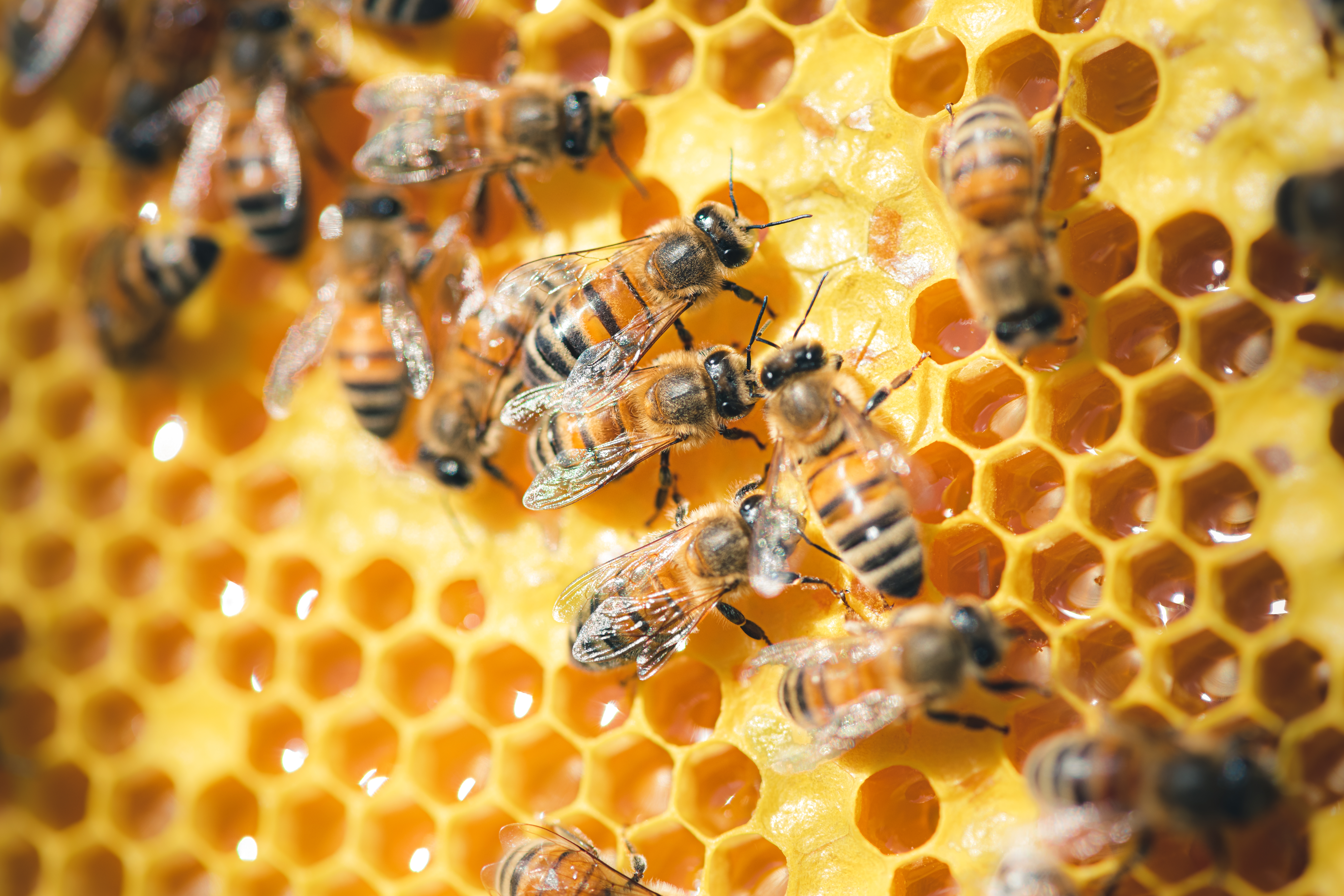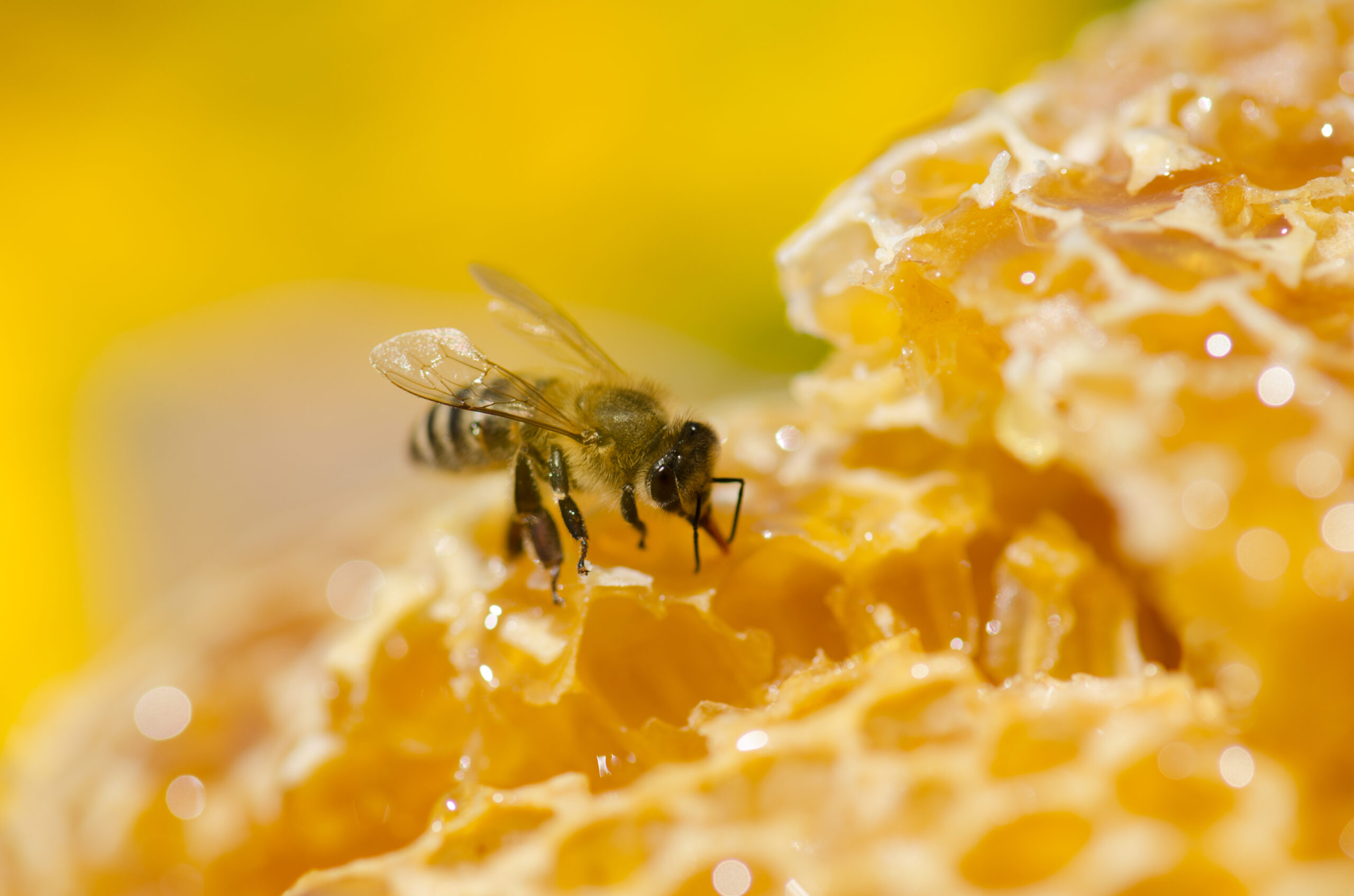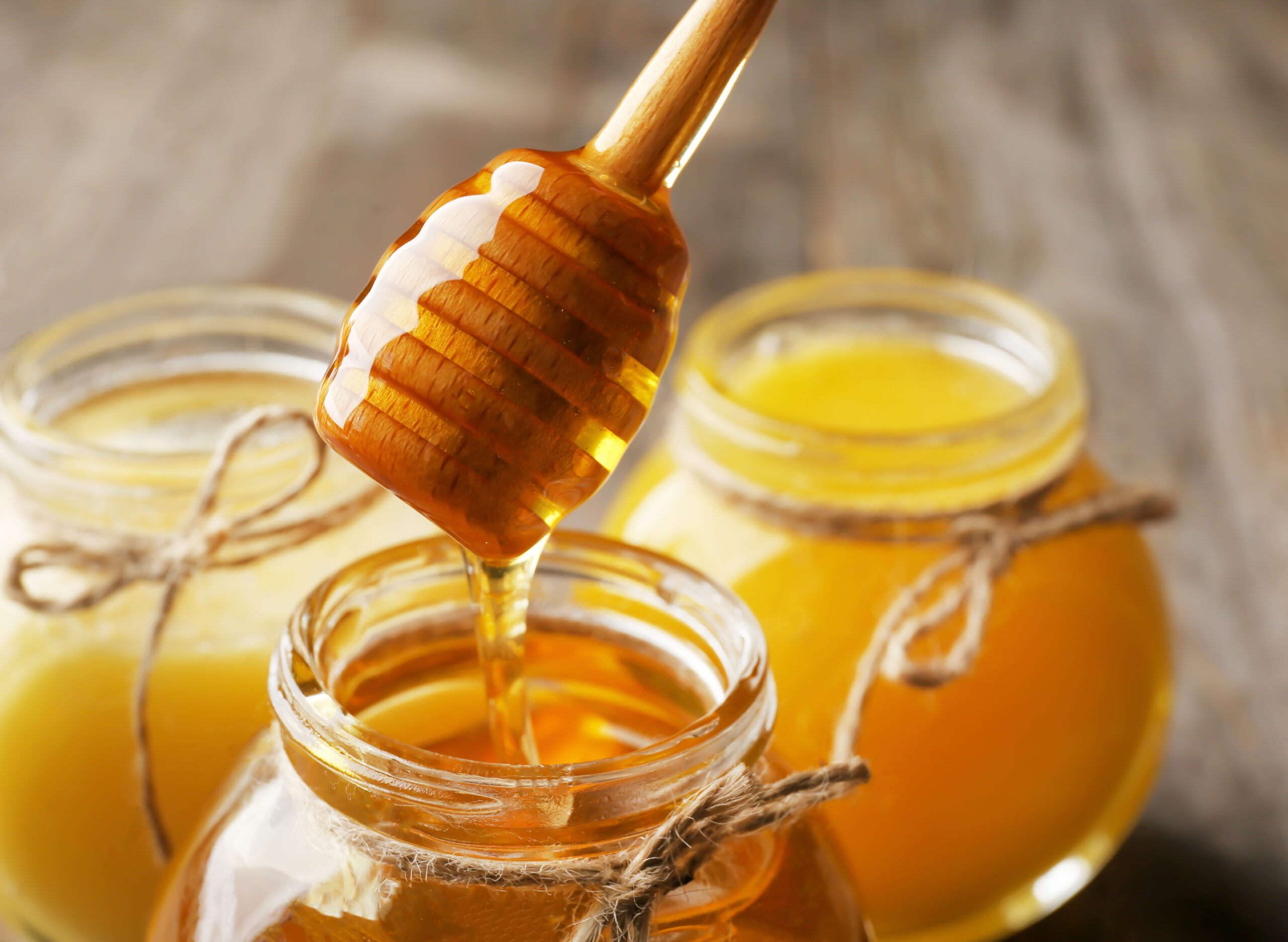How Do Honeybees Make Honey?
How Do Honeybees Make Honey?
There is a reason why “busy bee” is a famous phrase that has been used for generations. These insects are always checking items off of their to-do lists and keeping their huge colonies in tact by providing food, water, and a reliable shelter all year long. Every species of bee has different preferences and habits, and one species with a clear purpose is the honeybee. These bees are the reason why we are able to enjoy pure honey in our tea and on our toast, but you may be surprised to learn that honeybees actually have a few personal reasons for making this sweet substance. It is quite the process for them to create honey, starting from the very first step of gathering flower nectar just like any other bee. Today, we’re exploring all things honey and looking into the reasons why honeybees make it, how they create it, and what makes it so special in the first place.
Why Honey?

To begin this journey, it may be helpful to know the reasons why honeybees create honey in the first place. The primary purpose of honey is to provide the bees with a steady food source throughout the winter. They can’t get their typical food of pollen and nectar when all of the flowers are frozen, so honeybees rely on honey to get them through the cold winter months. This is a trait unique to honeybees, as other bee species only have the queen survive the winter in a hidden location. When a honeybee hive is full of honey, it is naturally insulates the interior and protects the bees from harsh temperatures. Honey is also the main food source for young bees in every season, which quickly multiply when the queen continues laying eggs. A healthy bee colony will produce a lot of honey, to the point of it being far too much for the small insects to consume. In fact, it is estimated that they can produce 2 to 3 times the amount of honey they actually need if they have enough workers and flower nectar. This is how beekeepers can take the honey from the frames without stripping the entire colony of its honey; the goal is to safely remove the excess and leave the rest for the bees who created it.
In short, honey is vital to the survival of honeybees. The workers are naturally equipped to complete this process through the combination of teamwork and dedication (aka everything your childhood teachers and coaches told you to use).
Working for a Living

The worker bees begin the honey-making process as if they were simply gathering food. The honeybee detects nectar with their antennae and collects it from each flower they visit by drinking it with their long mouthparts, or proboscis. They store it in their second stomach called the honey stomach, where it will safely sit as the bee continues to fill it up. The worker bee will eventually return to the hive and pass it from their mouth to the mouth of the younger bee designated to work in the hive. The honeybee will chew on the nectar for a little while before passing it to another bee’s mouth, and this pattern continues until the nectar is broken down and the water content is reduced. This process is inversion, where the complex sugars are broken down into simple sugars. The last bee will place the nectar juice into a cell of the hive, then furiously flap its wings above it until the nectar thickens up into honey. The last step is to contain the honey, so a honeybee will create a beeswax cap and seal off that cell to keep the honey preserved.
It is interesting to note that this entire process is not only how honey is created, it is also how it stays preserved for so long. The cells of the beehive protect it from the outside elements and the other bees living in the hive. Honey itself is bacteria-resistant because of the bees’ process. Since the water is reduced and the sugar content is high, honey cannot technically expire or go bad. On another note, it is time to put the strangest rumor regarding honey to rest. Many people have said that it is actually bee vomit since it is stored in the stomach and passed from their mouths. This disturbing idea is thankfully false. Since the nectar is stored in a separate stomach from the bee’s actual stomach, it is not digested and therefore is not vomit. It is cleanly passed from bee to bee without entering any of their digestive systems. They do have the ability to pass some nectar into their actual stomach to digest it if they need the energy to continue foraging, but they do this sparingly in order to bring as much nectar as possible back to the beehive.
Honeybee Habits

Honeybees are interesting insects, seeing as how they are related to some of our most frustrating pests yet are distinct enough to be in a league of their own. Healthy honeybee colonies have about 60,000 bees, and most of them will survive the winter by living on honey and staying huddled in the hive for body heat. One worker bee will create about 1/2 of a teaspoon of honey in its entire life. By this number, it would take 2 million visits to flowers in order to produce one pound of honey! The honey stomach of the bee can hold about 80% of the bee’s body weight in nectar, so it can gather quite a bit during a day of foraging. A honeybee colony’s goal is to fill every available cell with honey, which is entirely possible when they have thousands of workers in one colony.
However, just like any other insect, honeybees are entirely affected by the weather. They are ectothermic — or cold-blooded — so their energy level is dependent on the outside temperature. The warmer it is, the more energy they will have and the more time they can spend foraging for nectar. The buzzing they create with their wings can actually generate heat, so a group of buzzing bees inside the hive will keep it warm enough to sustain the colony and protect the honey. Honey is actually quite hardy and can survive all kinds of temperatures and weather conditions, as long as it is contained in some kind of a secure vessel. Many health experts swear by honey as a natural way to take care of your body inside and out — and they are right.
Honey Know-How

Honey is a captivating creation when we take the time to study it, but we often overlook its complexity in favor of just drizzling some on our oatmeal and calling it a day. It is one of the few edible substances, and possibly the only one, that will not expire in containment. There have been news stories about archaeologists finding preserved honey from centuries ago that can still be eaten today, such as when archaeologists found 5,500-year-old honey in the country of Georgia in 2003. When it is not converted into honey, flower nectar will ferment and become unable to be used by honeybees. This ingredient is a sugary liquid that provides easy carbs for hungry bees, but it can become so much more when it is inverted and processed by the honeybees in the hive.
When you scour your local grocery store for honey, you will see quite a few options. If you want the real-deal honey (and you do) without any added sugars and preservatives, you want to look for the jars labeled “pure honey” or something similar. This essentially means that the honey went straight from the honeycombs in the hive to the jar, so it is as real as you can get. However, even real honey does not have just one look. The color, flavor, and smell of honey depends on the flower nectar it comes from, so the best-tasting honey is simply a matter of preference. The health benefits of pure honey are all the same. It has plenty of good vitamins, amino acids, minerals, and enzymes that all have their own health benefits. The specific types and amounts of each depend on the original flowers. Honey is also probiotic and anti-inflammatory, so it is a great way to care for your body in multiple ways. Many people like to eat just a bit of honey every day for these reasons, and some even like it as an ingredient in their skincare products with the purpose of helping with inflammation and redness. It turns out that honey is one of the best multi-purpose items around: it helps honeybees survive the winter, it tastes great in our food and drinks, and it can help us feel just a bit better once we enjoy the creation of these busy bees.
Green Knows Stinging Pests
Just like many other professional pest control companies, Green Pest Services does not treat honeybee nests. Since these insects are essential to the ecosystem and will not sting anyone unless their nest is directly disturbed, it would not be ideal to spray them with pest repellant. That being said, we do treat other stinging pests that commonly invade our backyards and houses, including hornets, yellow jackets, paper wasps, and mud daubers. Our team of highly-trained technicians is dedicated to protecting your home and family from these painful pests, and we do not leave any pest problem unsolved. Between our thorough inspections and our customized treatment plans, we guarantee that we will get to the root of any pest problems you have throughout the year. Plus, all of our treatments are completely safe for people and pets, so you don’t have the added stress of questionable products being used in your home. Contact us to schedule your initial service with our caring team and take the sting out of your summer!
Citations
Harvey, A. (2023, May 3). How do bees make honey? From the hive to the pot. LiveScience. Available at https://www.livescience.com/how-do-bees-make-honey (Accessed on August 22, 2023).
How do bees make honey?. (n.d.). Honey Flow. Retrieved August 22, 2023, from https://www.honeyflow.com/blogs/beekeeping-basics/how-do-bees-make-honey
How do bees make honey?. (n.d.). Perfect Bee. Retrieved August 22, 2023, from https://www.perfectbee.com/learn-about-bees/the-life-of-bees/how-do-bees-make-honey
How do bees make honey? 4 steps that honeybees make. (2021, February 1). Mountain Valley Honey. Retrieved August 22, 2023, from https://mountainvalleyhoney.co.nz/articles/how-do-bees-make-honey-4-steps-that-honeybees-make/
How honey is made. (n.d.). National Honey Board. Retrieved August 22, 2023, from https://honey.com/about-honey/how-honey-is-made
Wong, S. (n.d.). Why do bees make honey?. NewScientist. Available at https://www.newscientist.com/question/bees-make-honey/ (Accessed on August 22, 2023).
World’s oldest honey. (2019, September 12). Bee Mission. Retrieved August 22, 2023, from https://beemission.com/blogs/news/worlds-oldest-honey
8 Creative Ways to Have a Pest-Free Fourth of July
8 Creative Ways to Have a Pest-Free Fourth of July 8 Creative Ways to Have a Pest-Free Fourth of July Summary: The Fourth [...]
A Simple Guide to Preventing Stinging Pests
A Simple Guide to Preventing Stinging Pests A Simple Guide to Preventing Stinging Pests Summary: Stinging insects are more active in warm weather, [...]
These 10 Natural Mosquito Repellents Can Actually Help
These 10 Natural Mosquito Repellents Can Actually Help These 10 Natural Mosquito Repellents Can Actually Help Summary: Natural mosquito repellents are easier to [...]
How to Get Rid of Carpet Beetles
How to Get Rid of Carpet Beetles How to Get Rid of Carpet Beetles Summary: Carpet beetles are sneaky pests that don’t usually [...]
How Do Roaches Affect Asthma and Allergies?
How Do Roaches Affect Asthma and Allergies? How Do Roaches Affect Asthma and Allergies? Summary: It’s no secret that pests impact human health, [...]
These 5 Carnivorous Pests Might Surprise You!
These 5 Carnivorous Pests Might Surprise You! These 5 Carnivorous Pests Might Surprise You! Summary: There are many eco-friendly ways to prevent pests, [...]

